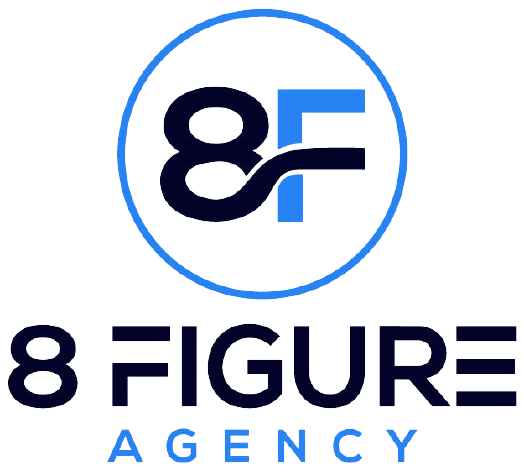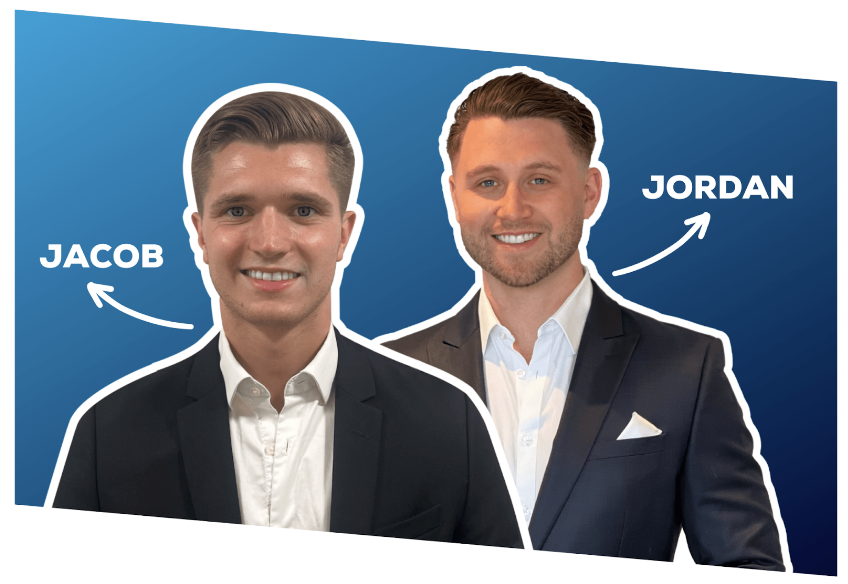The GWC model is often associated with the Entrepreneurial Operating System (EOS), a business management system created by Gino Wickman. GWC stands for “Get it, Want it, Capacity to do it.”
It’s a framework for marketing agencies to evaluate clients, and team members and ensure successful partnerships. To elevate your agency, it’s important to have team members who are capable of seizing opportunities and driving initiatives forward. When managers define a position with clarity, outlining roles, responsibilities, expectations, and measurable outcomes, the person who assumes that role should be inspired to take immediate leadership.
In this guide, we will explore how to find the right fit, through our take on the GWC model.
Significance in Marketing Agencies
The GWC Model optimizes role alignment in marketing agencies, preventing misalignment and fostering team motivation. Emphasizing “Want It” boosts innovation and dedication. The model enhances efficiency by assessing task capacity and reducing bottlenecks. Applied collectively, it ensures team understanding, desire, and capacity for agency goals. In the dynamic marketing landscape, GWC promotes adaptability, contributing to sustained agency success.
For instance, here at 8 Figure Agency, we have been facilitating marketing agencies to Get it, Want it, and realize their Capacity to do it since 2021. Our goal is to enable a thousand agency owners to scale their businesses tenfold while liberating themselves from day-to-day operational tasks. Find out how we can help you leverage the GWC Model for your agency.
Book A Free 8 Figure Agency Consultation Today!
Understanding GWC
Let’s dive into understanding each of the three pillars of the GWC Model.
The G – People Who “Get” It
‘Get It’ refers to individuals with a clear grasp of their roles, responsibilities, and the skills required. These employees align their efforts with team objectives, promoting role clarity, reducing misunderstandings, and enhancing overall efficiency. This shared understanding also aligns individual efforts with the organization’s mission and vision, fostering collective success.
The W – People Who “Want” It
‘Want It’ signifies individuals with both competence and genuine passion for excellence. Their intrinsic motivation and commitment lead to increased productivity and innovation. Having a team of such individuals fosters a positive, dynamic work environment, promoting collaboration and creativity for enhanced organizational outcomes.
The C – People Who Have the “Capacity” for It
‘Capacity to Do It‘ refers to individuals with requisite skills, adaptability, and resourcefulness. Proficient in technical and interpersonal skills, they ensure efficient operations and contribute to organizational competitiveness and innovation in a dynamic environment, emphasizing their importance in organizational success.
Customizing GWC for Marketing Agencies: The 8FA Perspective
The Get It, Want It, Capacity to Do It (GWC) model offers a valuable framework for evaluating potential clients in the marketing agency world. However, 8 Figure Agency focuses on high-growth businesses and takes it a step further by customizing the GWC approach to align with its specific goals and clientele. 8 Figure Agency’s GWC customization prioritizes high-growth potential, ideal client fit, and data-driven insights. This approach aligns with their niche focus on scaling businesses and differentiates them from the broader EOS framework.
8 Figure Agency’s GWC approach differs from EOS in several aspects:
- Scalability Focus:
- 8FA: Prioritizes rapid growth, assessing client potential for acceleration.
- EOS: Broadly applies to businesses of all sizes and stages.
- Ideal Client Fit:
-
- 8FA: Considers values, expertise, and long-term fit beyond traditional GWC.
-
- EOS: Provides a general framework for diverse businesses.
- Metrics-Driven Decisions:
-
- 8FA: Utilizes data for quantitative GWC assessment.
- EOS: Emphasizes qualitative assessments and team alignment.
- Proactive Partnership:
-
- 8FA: Acts as a strategic partner, advising on scaling strategies.
- EOS: Focuses on internal alignment, not as deeply on client-specific consulting.
- Continuous Adaptability:
-
- 8FA: Adapts GWC criteria based on data, client feedback, and industry trends.
-
- EOS: Offers a more static framework with core operating principles.
Find out if the 8FA Adaptation is right for your agency.
Book A Free 8 Figure Agency Consultation Today!
GWC Model in Action
Because of 8 Figure Agency’s GWC customization which prioritizes high-growth potential, ideal client fit, and data-driven insights.
The following agencies were able to achieve desirable results:
Internal Collaboration and Project Success
BLNK Slate Media a creative agency built on the foundation of creating content for social media, implemented the GWC model to assess team members for specific projects. This helped identify skills gaps and ensure the right personnel were assigned, leading to smoother project execution and higher client satisfaction. Founder Sam Lister has since sold the agency for approximately $1 Million. Watch that interview here:
How Sam Lister Built and Sold his $1,000,000 Agency
Turning Down the Right Projects
Pneuma Media, a digital marketing agency used the GWC model to identify potential clients who lacked internal resources and clear goals. While a lot of these are lucrative contracts, declining projects due to capacity mismatch allowed them to focus on existing high-performing clients, ultimately boosting overall profitability. Owner David Riggs, with an 8 Figure Agency partnership was able to build a $1 Million a year marketing agency in just 10 months. Watch that interview here:
He Built a $1 Million A Year SMMA in Just 10 Months
Benefits for Marketing Teams
The GWC model benefits marketing teams by improving client selection, fostering stronger partnerships, and reducing churn. It enhances team efficiency through optimal resource allocation, leading to a skilled and engaged workforce and improved project outcomes.
The model aids in increased resource allocation, prioritizing projects for maximum success and return on investment. Lastly, GWC encourages a shared understanding, reducing friction and facilitating smoother workflows through improved internal communication.
Challenges Faced and Solutions
The GWC model is a powerful tool, but it’s not a one-size-fits-all solution. Adapting the model to your specific agency’s needs, addressing potential challenges, and using it alongside other evaluation methods will maximize its effectiveness and unlock its full potential for your marketing team.
- Subjectivity and Bias: GWC criteria can be subjective, leading to potential bias in evaluation. To address this, agencies can create clear, objective metrics and utilize diverse evaluators with different perspectives.
- Overlooking Hidden Potential: Focusing solely on GWC criteria may lead to overlooking clients with hidden potential or unique strengths. Maintaining flexibility and incorporating qualitative assessments alongside the model can help mitigate this risk.
- Implementation Challenges: Integrating the GWC model into existing processes and workflows can be challenging. Effective training, clear communication, and ongoing refinement are crucial for successful implementation.
Finding the Right People

Identifying the right talent for your marketing agency with the GWC model at your core can take your recruitment game to the next level. Let’s explore how to apply this framework to find individuals who truly “Get it, Want it, and Have the Capacity” to excel in your organization.
Recruitment Strategies Aligned with GWC
But first, let’s break it down:
Get It:
Optimize hiring with clear job descriptions using industry language. Employ technical assessments and case studies for practical skill evaluation, ensuring alignment with organizational expectations. This focused approach identifies candidates with both skills and practical acumen for success in the specified position.
Want It:
Enhance hiring with strategic techniques. Use behavioral interviews to uncover genuine interest and enthusiasm. Assess cultural fit through office tours and introductions. Explore passion projects to understand intrinsic motivation. These approaches evaluate both the qualifications and personal aspects of a culturally aligned team.
Capacity To Do It:
Bolster the recruitment process by promoting transparency and validation. Provide realistic job previews, openly communicating about workload and challenges. Validate skills through thorough checks, including previous employers and certifications. Integrate work style assessments for insights into candidates’ compatibility with team dynamics, ensuring a holistic evaluation of their suitability.
Interview Techniques for G, W, and C Evaluation
Let’s dig deeper:
Get It:
- “Tell me about a time you…” questions focusing on specific skills and knowledge related to the job.
- “Explain your thought process…” to assess problem-solving and critical thinking abilities.
- “How would you handle a situation like…” to evaluate decision-making skills and resourcefulness.
Want It:
- “What excites you most about this opportunity?” to gauge genuine interest and enthusiasm.
- “What are your long-term career goals?” to understand how the role aligns with their aspirations.
- “Tell me about a time you went above and beyond…” to assess commitment and dedication.
Capacity To Do It:
- “Describe your experience with…” specific technical skills or relevant tools.
- “How do you manage your time and prioritize tasks?” to evaluate organizational and time management skills.
- “Tell me about a time you faced a challenge and how you overcame it.” to assess resilience and problem-solving skills under pressure.
While not a talent recruitment agency, 8 Figure Agency can help you identify where your organization needs bolstering so that you can take advantage of streamlined operations and management processes. Don’t you want to get out of the feast or famine cycle?
Book A Free 8 Figure Agency Consultation Today!
Training and Development
The GWC model extends beyond recruitment to nurturing and maximizing the potential of your existing marketing agency team. Let’s dive into how to tailor training and development programs to enhance “Get,” “Want,” and “Capacity” within your workforce.
Tailoring Programs to Enhance “Get,” “Want,” and “Capacity”
Here’s what you need to know:
Get It:
Boost your team’s capabilities with skill-specific workshops, mentorship programs for knowledge-sharing, and industry deep dives for a broader understanding. This multi-pronged approach ensures ongoing skill development, mentorship support, and a comprehensive grasp of industry dynamics, fostering continuous team growth and proficiency.
Want It:
Elevate team dynamics with team-building activities for collaboration, goal-setting, and recognition programs for aligned objectives and sustained motivation. Empower employees through task delegation and leadership opportunities, fostering ownership and responsibility. These integrated approaches nurture a positive team culture, individual growth, and a collective commitment to organizational success.
Capacity To Do It:
Drive continuous improvement in your team through regular performance feedback, coaching, and cross-functional training. Encourage skill-sharing and invest in technical training to stay updated on industry-relevant technologies. This holistic approach creates a dynamic, adaptable team well-equipped for evolving challenges and organizational success.
Continuous Learning for Sustaining GWC
You can leverage continuous learning for GWC sustainability by fostering a culture of curiosity, experimentation, and improvement. Offer flexible learning options, including online courses and microlearning, accommodating diverse styles and busy schedules. Ensure effectiveness through consistent tracking and metrics, cultivating an adaptable workforce aligned with the GWC model for long-term success.
GWC Assessment Tools
The GWC model holds immense potential for agencies looking to identify ideal clients and build successful partnerships. Let’s explore how to effectively operationalize this framework.
Overview of Existing Tools
Here are a few tools that you can use:
- Surveys: Pre-designed or custom surveys can gauge a client’s understanding of the industry, their goals, and resource commitment. Tools like SurveyMonkey or Typeform offer easy customization and data analysis.
- Scorecards and Rubrics: Develop clear criteria for each GWC element (Get, Want, Capacity), assigning points or ratings based on the client’s performance in assessments or interviews. Excel or Google Sheets can serve as simple platforms.
- Project Proposal Analysis: Analyze the client’s project proposal for insights into their goals, target audience, and budget allocation. Software like Proposify or PandaDoc can track proposal revisions and provide data-driven insights.
- Data and Industry Benchmarks: Compare the client’s metrics (e.g., website traffic, social media engagement) to industry benchmarks to assess their potential for growth and alignment with your agency’s expertise. Tools like SimilarWeb or Buzzsumo provide competitive intelligence.
- Interview Techniques: Craft interview questions tailored to evaluate each GWC element. Behavioral interviewing techniques can uncover the client’s motivations, decision-making process, and commitment to working with your agency.
How to Implement GWC Assessment in Agencies
Tailor GWC to your agency by defining metrics for each element. Use surveys, interviews, and data analysis for a comprehensive assessment. Ensure team proficiency through consistent training. Establish a clear decision-making process with set thresholds and consider a weighted scoring system. Foster transparency by communicating the GWC-based assessment process to potential clients, building trust. This holistic approach enhances the agency’s ability to select clients aligned with its strengths and objectives.
Also, our expert team at 8 Figure Agency can help agencies break free from the feast-or-famine cycle by establishing reliable cash flow, enhancing profit margins, and ensuring consistent goal achievement each year. Get it because you Want it. Your agency has the Capacity to hit your MRR milestones. 8 Figure Agency can help you achieve this through improved operational processes and strategic management decisions.
Book A Free 8 Figure Agency Consultation Today!
GWC for Project Management
The GWC model can be a powerful tool in project management for a marketing agency. It can work by enhancing your chances of successful execution and team synergy. Let’s explore the impact of GWC on project success and delve into specific tools and techniques you can leverage.
GWC’s Impact on Project Success
The GWC model significantly impacts project success by enhancing team alignment, reducing the risk of failure through effective team selection and resource allocation, and improving client satisfaction. Streamlined project execution, facilitated by clear roles, motivated team members, and efficient resource allocation, results in faster achievement of milestones. GWC fosters proactive problem-solving, ingrained in the project culture, driven by individuals who “Get It” and a team motivated by the “Want It” factor, ensuring greater resilience and agility throughout the project lifecycle.
Tools and Techniques for GWC-Based Project Management
Remember, applying the GWC model isn’t a one-time process. Adapting tools and techniques to your specific project needs and fostering a culture of open communication will unlock the full potential of GWC in your project management endeavors.
- Skill Gap Analysis: Identify individual strengths and weaknesses through assessments and skills evaluations, ensuring tasks are assigned to those who possess the “Capacity to do it.”
- Goal-Setting and Alignment: Set clear, measurable goals for the project and ensure every team member understands their contribution towards achieving the larger objective. This aligns with “Get It” and “Want It” within the team.
- Regular Progress Evaluations: Monitor progress through key performance indicators (KPIs) and adapt strategies based on results. This proactive approach ensures both “Get It” and “Capacity to do it” are continuously assessed and refined.
- Communication and Collaboration Tools: Employ project management platforms or collaboration tools to promote transparency, information sharing, and knowledge transfer. This fosters a more engaged and motivated team (“Want It”) with better understanding (“Get It”).
- Motivation and Recognition: Regularly acknowledge and celebrate individual and team achievements. This reinforces “Want It” and creates a positive project environment.
Measuring GWC Effectiveness
Effective GWC implementation in a marketing agency isn’t enough; measuring its impact is required for continuous improvement and maximizing its potential.
Key Performance Indicators (KPIs) for GWC
Let’s take a closer look at a few KPIs
Get It:
- Client satisfaction surveys: Gauging how well the team understood and met client expectations.
- Project success rate: Evaluating how often projects achieve set goals within budget and deadline.
- Reduced rework and errors: Analyzing instances where tasks need redo due to misunderstanding or lack of knowledge.
Want It:
- Employee engagement surveys: Measuring motivation, enthusiasm, and commitment to project goals.
- Team turnover rate: Tracking departures that might indicate dissatisfaction or lack of alignment.
- Performance reviews: Assessing individual contributions and dedication to exceeding expectations.
Capacity To Do It:
- Project completion timeliness: Monitoring whether resources and skills are adequate for timely delivery.
- Skills utilization rate: Ensuring appropriate allocation of individual skills to maximize team efficiency.
- Client feedback on team expertise: Gathering insights on perceived competence and ability to handle tasks.
Analyzing and Adapting Based on Results
The effectiveness of the GWC model can be enhanced strategically. Start by identifying trends in collected data, benchmarking KPIs against industry averages, and conducting root cause analysis for shortfalls. You can then refine assessment tools and standard operating procedures based on gaps, and by adjusting the surveys or interview questions. Adaptation comes with investing in targeted training to address capacity and knowledge gaps. You can then optimize team efficiency through role realignment for better alignment with individual strengths. These measures ensure a continuous improvement cycle, fostering an adaptive and high-performing team aligned with the GWC model.
GWC and Client Relations
The GWC model’s emphasis on “Get It, Want It, and Capacity to do it” extends beyond internal project management and can significantly impact client relations. Remember, GWC is not a rigid checklist but a powerful tool for establishing meaningful and productive client relationships.
Strengthening Client-Agency Relationships with GWC
Client-agency relationships can be strengthened through the GWC model by ensuring a shared understanding of goals, transparent communication, and building trust. You should aim to evaluate clients with the “Want It” lens for aligned values and long-term vision to foster collaboration. When you take into consideration the client’s “Capacity to do it,” you’ll be able to create proactive solutions and become trusted advisors. GWC establishes the foundation for long-term relationships based on mutual respect and successful outcomes, enhancing client satisfaction.
Addressing Client Expectations Through GWC
Effectively managing client expectations with the GWC model involves strategic approaches. Accurately assess the client’s “Capacity to do it” for realistic scopes and budgets. Foster transparency through GWC-rooted communication, openly discussing project limitations and challenges. Proactively exceed expectations by leveraging expertise based on the client’s “Get It.” Use GWC-derived data and metrics for data-driven insights in client communication, building trust in the agency’s expertise. This holistic approach ensures a transparent, collaborative, and successful client-agency relationship.
GWC and Employee Satisfaction
The GWC model can be a powerful tool not only for project and client success but also for fostering employee satisfaction within your organization.
Employee Retention through GWC
Employee retention can be effectively managed through the GWC model, creating a work environment where employees “Get It,” “Want It,” and have the “Capacity to do it.” Aligning roles with strengths and providing support minimizes turnover, reducing costs and maintaining stability. GWC assessments identify strengths and weaknesses for personalized career development, enhancing job satisfaction. In a positive work environment where team members understand their roles, collaborate effectively, and feel valued, a sense of belonging and mutual respect flourish, driving employee satisfaction and loyalty.
Creating a Positive Work Environment with GWC
Cultivating a positive work environment in a marketing agency, through the GWC model involves ensuring clear communication and alignment on project goals, roles, and expectations, reducing confusion, and promoting collaboration. You should try to understand employees’ “Want It” and “Capacity to do it” for effective task delegation, fostering a sense of ownership and achievement. Acknowledge successes based on GWC contributions to create a culture of appreciation and recognition, boosting morale. Use GWC as a framework for feedback and development discussions, promoting growth and building trust for greater job satisfaction.
GWC and Innovation
The GWC framework can be a surprising yet powerful catalyst for innovation within your organization. Let’s explore how.
Fueling Innovation Through GWC
The GWC model fuels team innovation by emphasizing understanding (“Get It”) and soliciting diverse input, fostering creative brainstorming. Individuals with intrinsic motivation (“Want It”) drive a culture actively pursuing innovation, encouraging experimentation and risk-taking. The “Capacity to do it” ensures the team possesses skills and resources for efficient problem-solving and implementation of creative concepts. GWC’s dynamic approach, with continuous evaluation, embraces learnings and adjustments based on feedback, enhancing agility and adaptability. This makes GWC a powerful driver of innovation within the team.
GWC’s Role in Nurturing Creative Thinking
GWC nurtures creative thinking by promoting cross-functional collaboration, breaking down silos, and creating an environment where diverse ideas inspire new creations. It values individual contributions, establishing psychological safety for unconventional ideas and experimentation without fear of failure. GWC celebrates experimentation, encouraging calculated risks and fostering a culture where exploration is welcomed. Additionally, GWC promotes a continuous learning mindset, igniting creativity and fueling the development of innovative ideas within the team.
Final Thoughts
Remember, GWC is not a rigid formula but a flexible framework that can be adapted to your unique organizational context. GWC is a powerful tool for any marketing agency seeking to elevate its game. By adopting this framework, agencies can optimize their client selection, maximize their resources, nurture an engaged workforce, and ultimately break the mold, push boundaries, and achieve unprecedented yet sustainable results.
Running a marketing agency doesn’t have to be complicated. 8 Figure Agency focuses on systems and processes, fulfillment, operations, management, data and reporting, company, and culture. These are all the foundations to figure out how to align the GWC model to better suit your agency. Don’t delay, leverage our experience from working with over 800+ clients and 3000+ jobs created, to work for you.
Book A Free 8 Figure Agency Consultation Today!
Business doesn’t have to be complicated.



















































